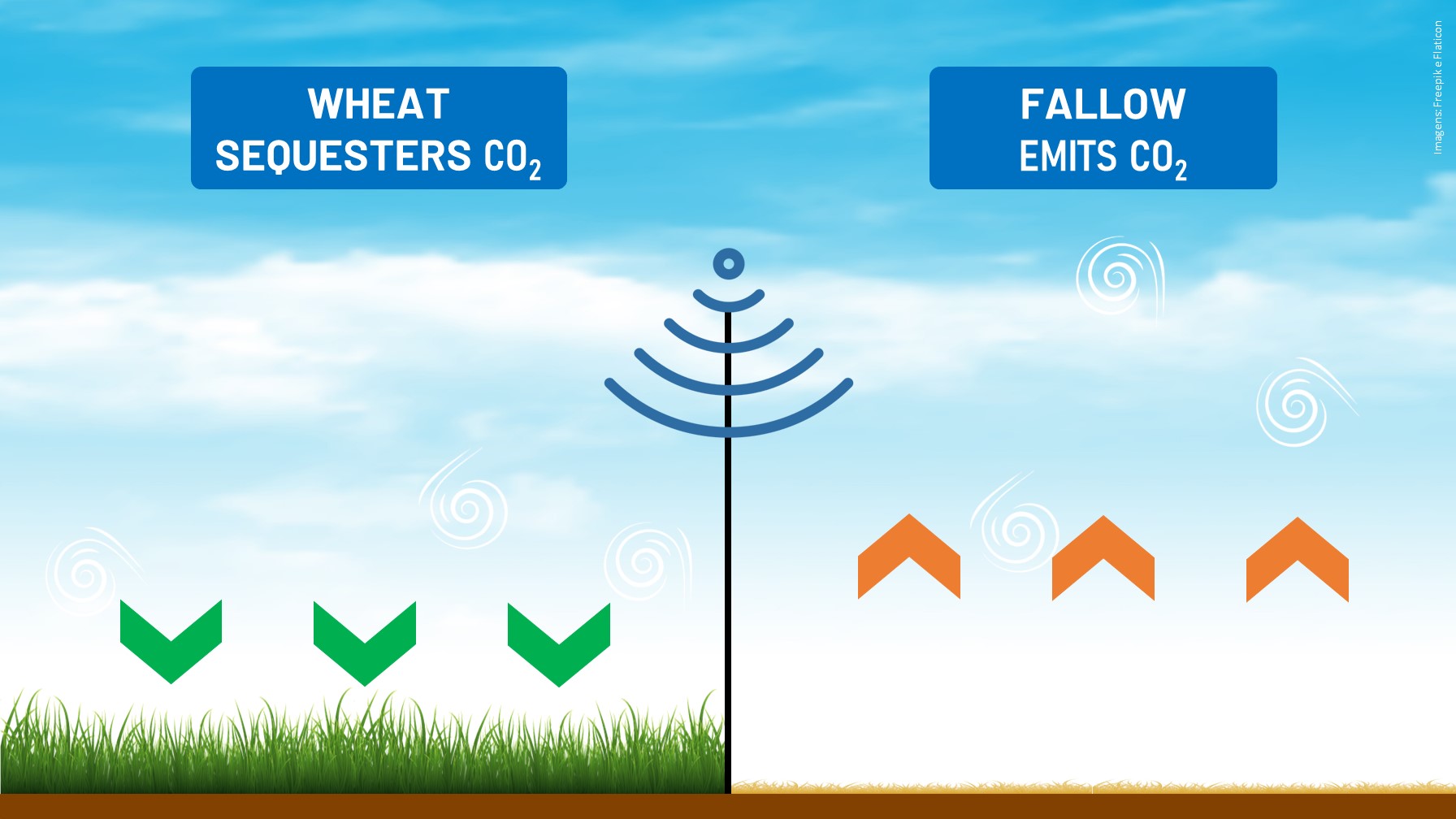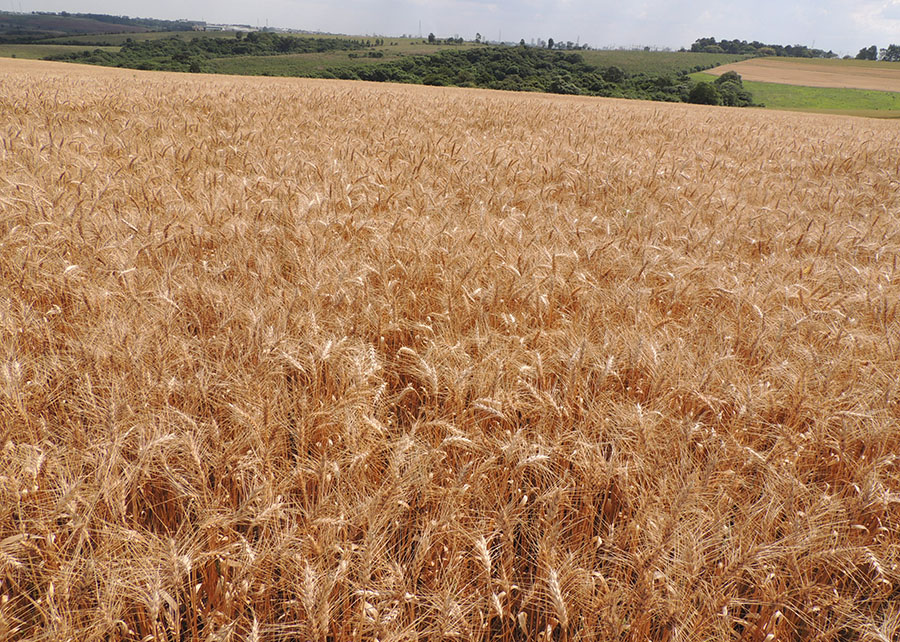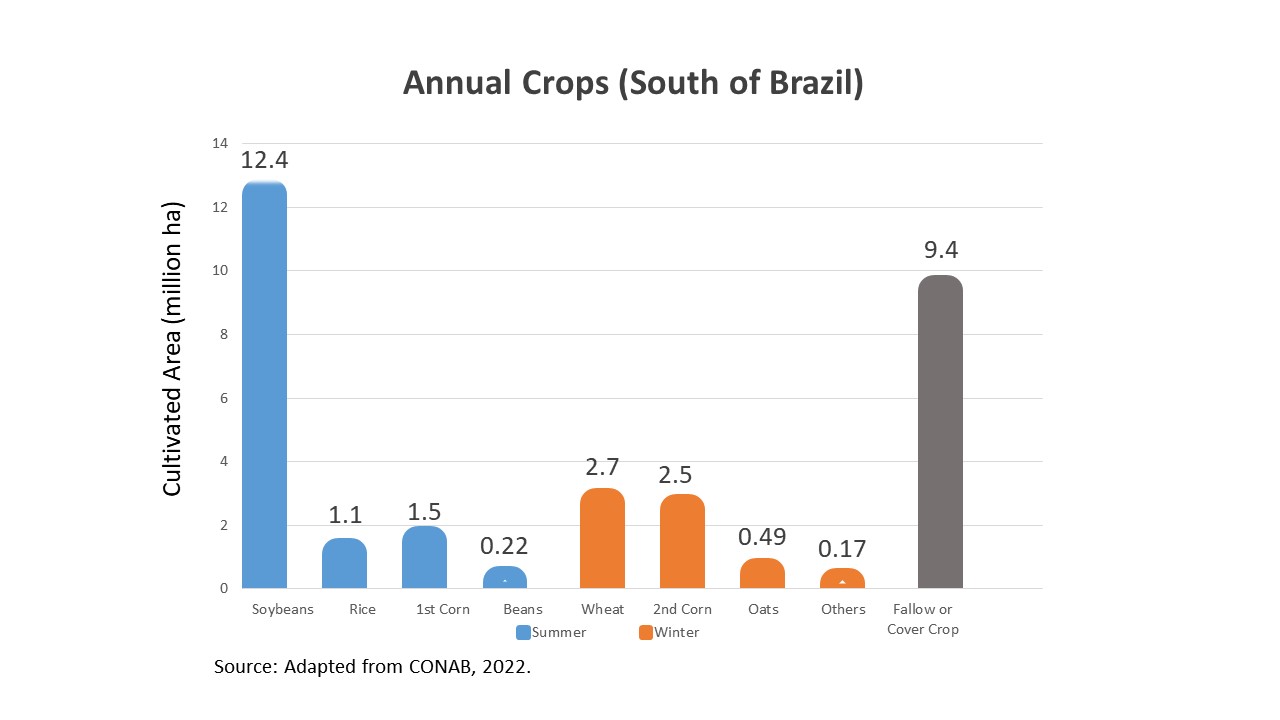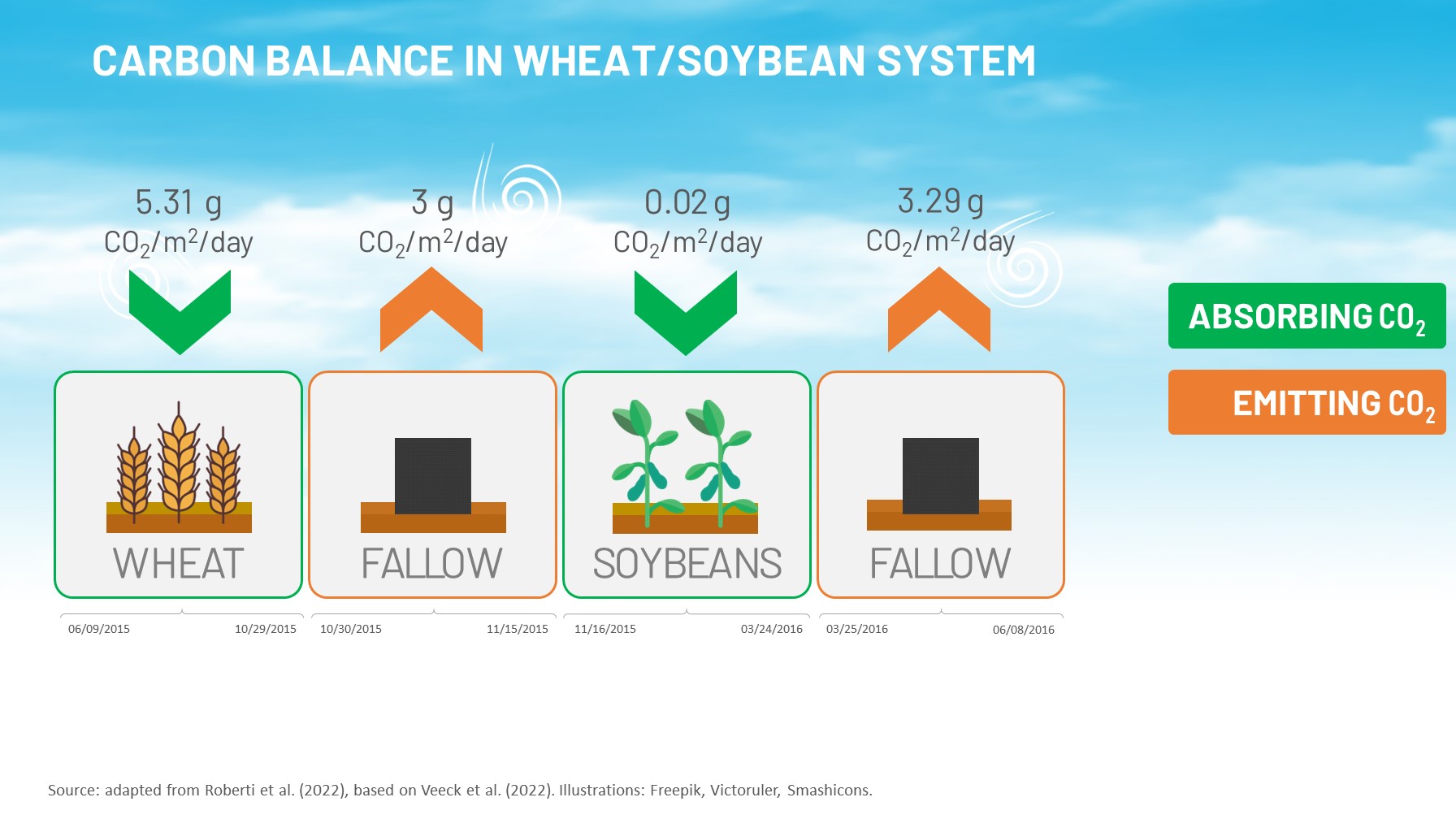Research shows cultivating wheat absorbs more carbon dioxide than it releases
Research shows cultivating wheat absorbs more carbon dioxide than it releases
Photo: José Henrique Chagas
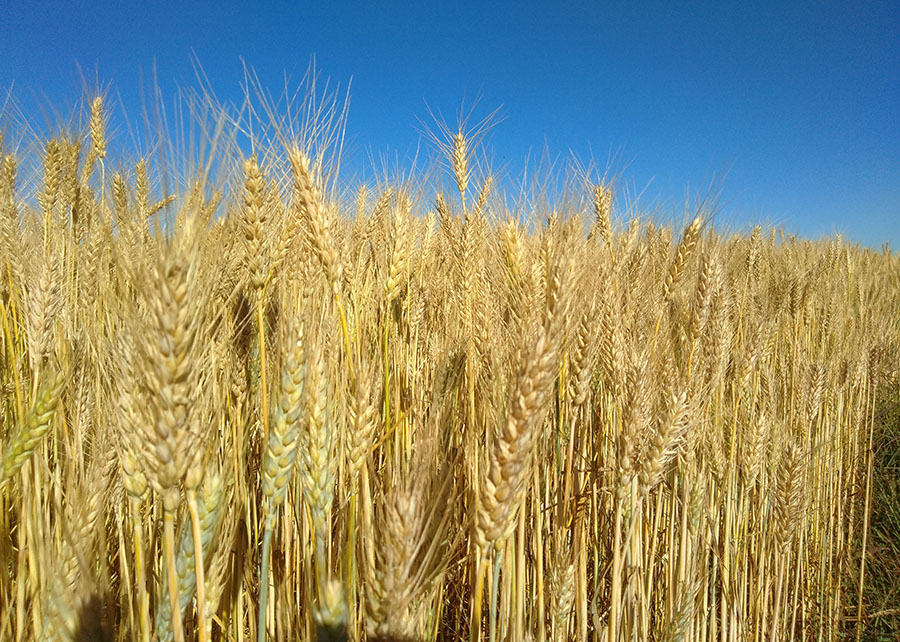
The scientists observed that wheat absorbed carbon dioxide during the production cycle, neutralizing emissions from fallow periods
|
Research conducted by Embrapa Wheat and the Federal University of Santa Maria (UFSM), has proven that wheat can sequester more carbon than it emits into the atmosphere. The scientists noted that during the production cycle, wheat absorbed a total of 7,540 kg of carbon dioxide (CO2) per hectare from the atmosphere, neutralizing emissions from fallow periods (without land cover plants or crops that generate income in the form of forage or grain production), and ensuring the net supply of 1,850 kg of CO2 per hectare. The findings are presented in the paper titled "CO2 flux in a wheat/soybean succession in subtropical Brazil: a carbon sink", which can be accessed here.
The research included the installation of a flux tower in a grain field in Carazinho, a town in the northern portion of Rio Grande do Sul state. This equipment has been used by UFSM to assess greenhouse gas (GHG) emissions since the 1990s. The goal was to assess the differences between carbon emission and retention (balance) in a wheat-soybean production system by quantifying the CO2 flows in a commercial farm.
Using the Eddy Covariance (EC) method, the flux tower captured information to identify the carbon balance at each stage of the production system throughout the year. The study involved ten professionals from different segments, such as agronomists, physicists, mathematicians and computer science professionals.
According to professor Débora Roberti, from UFSM's Department of Physics, although the equipment has a high acquisition cost (up to USD 180,000), it provides a quick response on the gas flows in the system and generates a solid database in just one year, while other field techniques require long periods of time for a reliable response regarding the carbon balance in the environment.
“The method we used helped to establish parameters to inform a more efficient management of agricultural areas in terms of carbon retention and towards a more sustainable grain production system,” the researcher explains, noting that the information generated can reach the producer in practical conditions and help decision-making: “We translated a series of algorithms into plain language that would be accessible to farmers and technical assistance professionals, so that the knowledge can be adopted in the cultivation,” she adds.
Carbon: noble villainCO2 is indispensable for plants to perform photosynthesis, a process that promotes biomass growth and the formation of fruits or grains. Through photosynthesis, the plant absorbs carbon and releases oxygen into the atmosphere. However, as the plants develop, they also release carbon, especially at night, when they breathe more and there is no light to photosynthesize. In addition, there is the process of decomposition of agricultural waste, which despite depending on several factors (environment, soil, management and composition), is responsible for a significant amount of CO2 emissions into the atmosphere. “Plants' CO2 emission and retention vary a lot depending on environmental conditions and agricultural activity, but managing CO2 is a primordial factor for food production,” recalls Embrapa researcher Jorge Alberto de Gouvêa. In the atmosphere, carbon dioxide is part of the gases like methane and nitrous oxide, which cause the greenhouse effect, a barrier that prevents the cooling of the planet. In Brazil, agriculture is one of the main sources of greenhouse gases with around 27% of the country's emissions, according to recent surveys by the Greenhouse Gas Emissions and Removals System - SEEG, from the acronym in Portuguese. According to SEEG's data on such agricultural emissions, agriculture accounts for nearly all CO2 emissions; however, methane and nitrous oxide emissions from animal farming have a higher impact on the greenhouse effect. That is why they are converted into CO2 equivalent, and thus, per SEEG's reports, they correspond to 69.3% of carbon emissions from agriculture and animal farming. Moreover, land use change (deforestation and fires) affect natural carbon sinks and contribute to rising emissions and increasing the greenhouse effect. The alternative is to invest in technologies that can enhance carbon sequestration, particularly in agriculture, by implementing intensive crop rotation systems. “It is within this aim that our research made an important discovery, as on top of demonstrating that wheat sequesters more carbon from the atmosphere than it emits, thus obtaining the noble role of accumulating carbon, it also revealed the villain of the production system, which is fallow, an agricultural practice that increases carbon emissions into the atmosphere,” states Embrapa researcher Anderson Santi. Farmer Paulo Vargas closely followed the experiment set up in his property, Capão Grande Farm, in Carazinho, Rio Grande do Sul. “Farmers have always been the ones who are the most interested in conserving the environment, precisely because they rely on natural resources to be able to work. Yet agriculture is usually called out as the villain, because it is an emitter of gases into the atmosphere. I believe that now, with the introduction of information generated by the research, this scenario will start to change, showing what we already knew in practice: crop rotation and permanent soil cover bring more benefits than impacts on the environment”, he states. |
Context for the system
The South of Brazil is the second largest grain producing region in the country, following its Midwest. The three southern states (Paraná, Santa Catarina and Rio Grande do Sul) account for over 90% of wheat production and 30% of the domestic soybean production. Due to the appreciation of soybeans in the market, winter crops do not always compose the agricultural scenario, and many areas are left fallow in the local fall and winter months.
In such Southern Region, according to data by Conab, over 15.2 million hectares are currently cultivated with summer crops (soybeans, corn as first crop and silage, rice and beans), and only 5.8 million hectares with winter crops (wheat, corn as second crop, oats, barley, triticale, rye and canola). Another 3 million hectares consist of integrated crop-livestock systems (ICLS), which rely on forage plants covering the soil during the fall and winter. Based on such figures, it is possible to estimate a fallow area of over 6 million hectares in the region during the winter, when there are no cover crops or income-generating crops in the properties.
In the subtropical environment of Southern Brazil, the lack of plant cover entails direct impacts on the soil, such as degradation through erosion, soil compaction, decrease in microbial activity and reduced fertility. The indirect impacts of fallow include a high incidence of weeds that increases production costs. Now the research findings also show the impacts of fallow on CO2 emissions into the atmosphere.
“Decarbonizing” wheatThe flux tower was installed in a grain cropland under a no-till system, with wheat sown in the winter and soybeans in the summer. The carbon balance was recorded at each stage of the production system, covering the wheat cultivation, spring fallow (between the wheat harvest and soybean sowing), soybean cultivation, and fall fallow (after the soybean harvest until the winter crop is sown). In order to assess the CO2 balance, the study considered retention in the production system and emission into the atmosphere, discounting the carbon that was exported in the harvested grains. “In the assessment of the results, wheat has shown that it is able to remove more carbon from the atmosphere than it emits, that is, it is a 'decarbonizing' crop, which helps to reduce greenhouse gases like CO2 in the atmosphere,” states Genei Antonio Dalmago,another researcher at Embrapa. The carbon balance at each stage of grain production, after deducting the amount extracted by the grains at harvest, showed that wheat incorporated 5.31 grams (g) of CO2 per square meter (m²) per day into the system. Soybeans, on the other hand, only emitted 0.02 g (almost negligible), while the two fallow periods together emitted 6.29 g. Wheat showed what researchers call a “negative carbon balance”, as the crop sequesters more carbon than it emits into the atmosphere. The wheat crop absorbed a total of 7,540 kg per hectare of CO2 from the atmosphere during the cycle, neutralizing emissions from fallow periods and ensuring a net supply of 1,850 kg/ha, which proved the possibility of wheat working as a “decarbonizing” crop in grain production in southern Brazil. The research findings also indicated the negative impacts of fallow on the grain production system with regard to CO2 emissions. Within just 30 days, it was able to emit 27% of all the carbon that wheat and soybeans accumulated in 11 months of cultivation. “It was possible to observe that the fallow in the production system emitted CO2, especially after the wheat harvest, when the heat accelerates the decomposition of the crop remains. In the experiment, there were only 15 days of fallow in the spring, with the emission of 11.5 grams of CO2 per square meter a day, a very high amount that needs to be mitigated in the system,” Dalmago states. According to him, winter cropping helps to balance the system, as soybeans absorb practically the same amount of CO2 that they emit, while wheat removes CO2 from the atmosphere. The researcher nevertheless warns that there are already alternatives to reduce or eliminate fallow between crops in the fall, such as cover crops, plants for grain production or to produce forage. “This was an initial study that aimed to assess wheat's performance in fixing CO2 in a grain production system in southern Brazil, but I believe that other fall and winter crops and even cover crops could offer an even more negative carbon balance,” the researcher reports. Gouvêa adds that the project is looking for partnerships to expand the assessment and monitoring infrastructure, especially new measurement towers, which can be placed in different grain production environments in the Brazilian South: “Our goal is to expand the study to encompass different production systems and combine new variables like carbon fixation in the soil, the influence of rainfall and other weather variables, topography, higher levels of lignin in species and its relationship with plant decomposition, among others,” he points out. |
Carbon credits
The potential impact of research on carbon fixation in grain production systems has repercussions both on the environmental and the economic spheres. The market for buying and selling carbon credits still lacks further regulation in the world, but since the Kyoto Protocol,which was signed in 1997, there has been economic value in reducing greenhouse gas emissions. Those who reduce their emissions can thus sell such carbon credits to the countries that emit the most.
Since 2009, Brazil has had the National Policy on Climate Change (Law No. 12,187/2009), which represents the country's pledge to the United Nations to reduce GHG emissions. Different Brazilian companies and institutions are already negotiating carbon credits in the voluntary carbon market, even without a defined legal basis.
According to Santi, Bill 528/2021, which regulates the Brazilian Emissions Reduction Market, establishes that 1 carbon credit is equivalent to 1 ton of CO2. Their hypothetical value is estimated at US$10 per carbon credit, noting that there is no consolidated market in the country yet, only inferences about figures.
According to the proposal, carbon credits would be linked to projects to reduce or remove greenhouse gases from the atmosphere, and such reduction (in tons) would be converted into bonds. Those bonds would be negotiated with governments, companies or individuals who have mandatory GHG emission reduction targets. Such negotiations would be defined by international laws and/or treaties.
“To enter the international carbon credit market, we first need the law that regulates this market in the country, and then we can start to quantify the CO2 balance in our agricultural production systems in different production regions, with the aim of generating credits. In this context, science has the fundamental role of competitively inserting Brazil in the carbon market ”, the researcher concludes.
Learn more about Low carbon agriculture on Embrapa's website.
Joseani M. Antunes (MTb 9.396/RS)
Embrapa Wheat
Press inquiries
trigo.imprensa@embrapa.br
Translation: Mariana Medeiros (13044/DF)
Superintendency of Communications
Further information on the topic
Citizen Attention Service (SAC)
www.embrapa.br/contact-us/sac/

